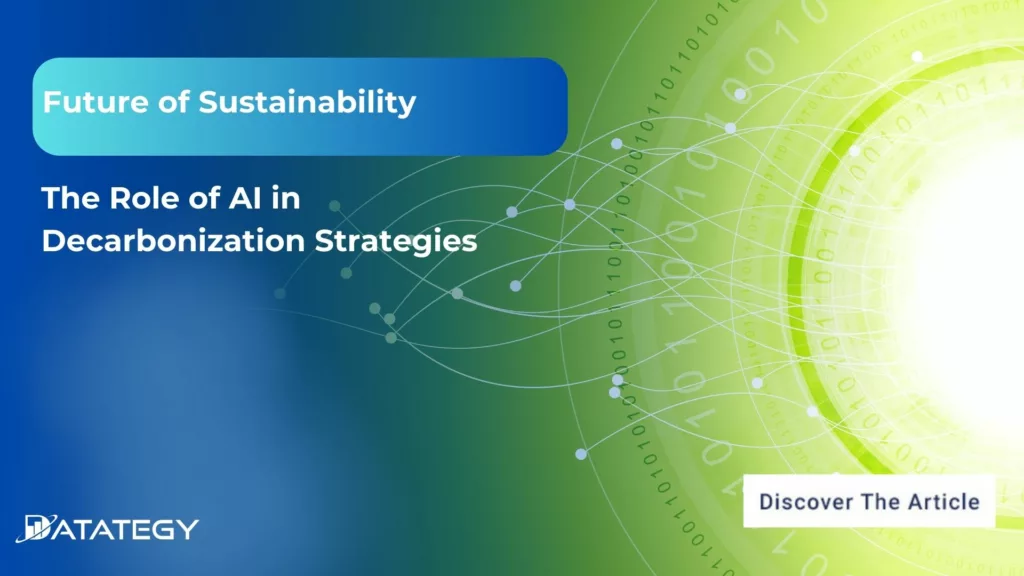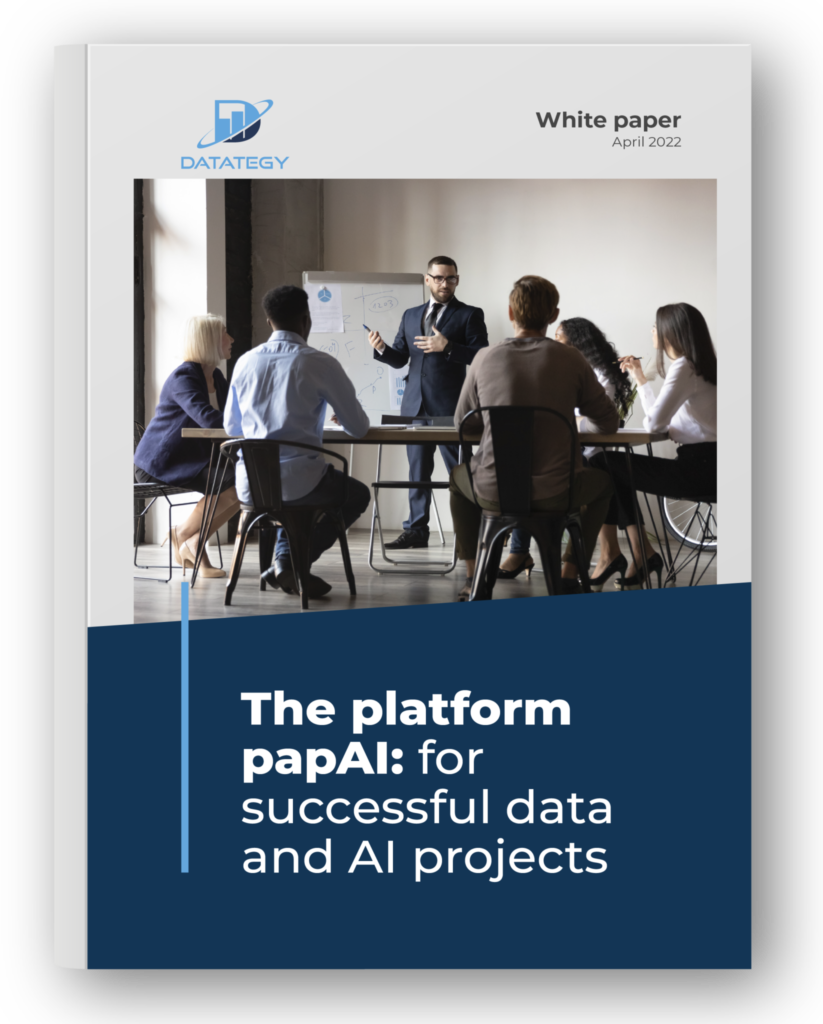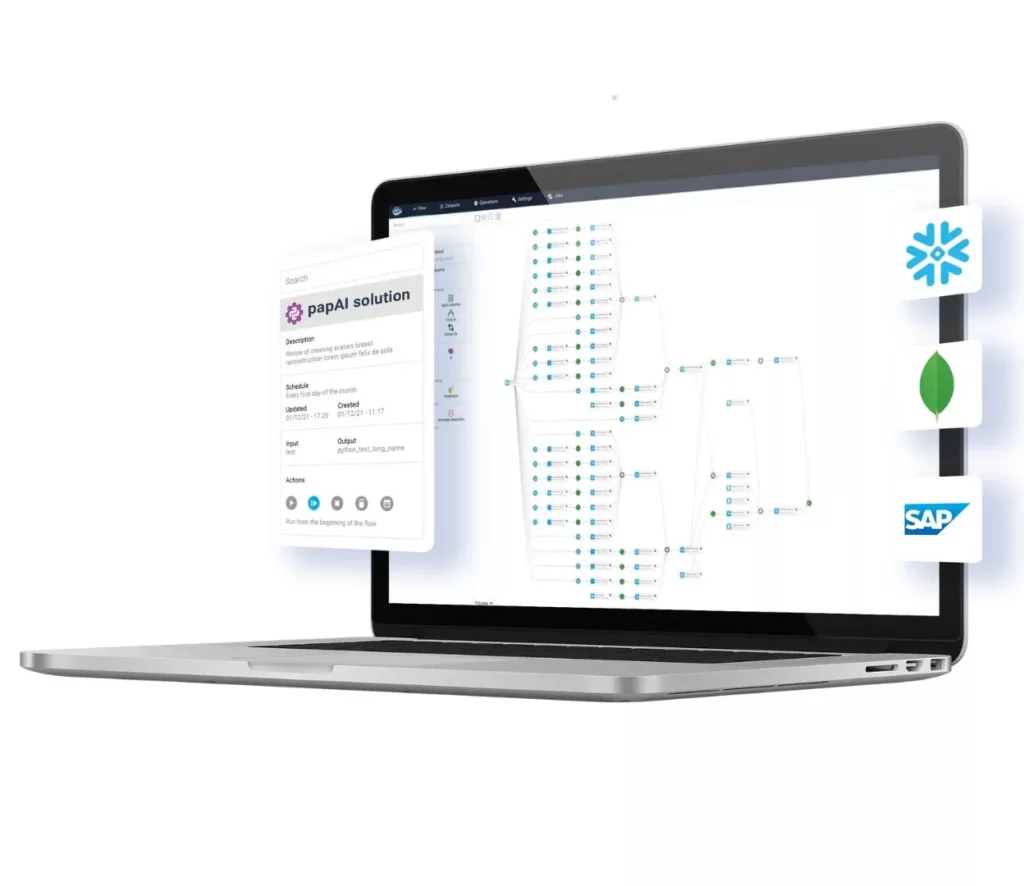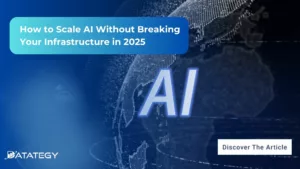How to Scale AI Without Breaking Your Infrastructure in 2025...
Read MoreFuture of Sustainability:
The Role of AI in Decarbonization Strategies
Table of Contents
ToggleArtificial intelligence (AI) has the potential to play a transformative role in decarbonizing the economy, helping to reduce greenhouse gas emissions and transition to a low-carbon future. AI can be applied to a wide range of decarbonization challenges. According to the latest studies, AI can help to reduce greenhouse gas emissions by up to 10%, the equivalent of 2.6 to 5.3 Gigatons of CO2.

In this article, we look at the impact of AI technologies in decarbonization, and how they reduce carbon emissions.
What does Decarbonization Mean?
Reducing or eliminating carbon dioxide (CO2) emissions from a variety of sources, such as energy generation, transportation, and industrial processes, is referred to as decarbonization. Instead of using fossil fuels, it entails switching to clean, renewable energy sources with a significantly smaller carbon footprint, such as geothermal, hydroelectric, solar, and wind power.
By lowering greenhouse gas emissions, switching to cleaner energy sources and alternative fuels promotes energy security and sustainability in addition to aiding in the fight against climate change.
Global CO2 emissions are expected to reach a record high of 37.2 Gigatons of CO2 in 2023, according to provisional data from the Global Carbon Project. This represents a 2.2% increase from 2022 emissions. The main driver of this increase is the recovery of the global economy from the COVID-19 pandemic. As economies reopen, people are traveling more, driving more, and using more electricity.
Harnessing the Benefits of AI in Decarbonization
In this section, we will see that exploiting the benefits of AI in decarbonization is not just an aspiration, but a tangible and dynamic reality:
1- Optimizing Carbon Footprint Measurement
The optimization of carbon footprint assessment is a key component in the quest for environmental sustainability, and the introduction of artificial intelligence (AI) presents a paradigm change in this vital process. AI has the underlying ability to improve data accuracy by using machine learning algorithms to instantly analyze large datasets. This improves the accuracy of carbon footprint estimates and helps companies pinpoint certain emission sources and patterns.
The characteristic of AI applications is continuous monitoring, which substitutes a dynamic, continuing process for periodic evaluations. Businesses can quickly identify changes and make the required modifications to cut emissions more responsively thanks to the continuous stream of data provided by sensors and Internet of Things (IoT) devices.
2- Minimizing Waste in Production Processes
Artificial intelligence (AI) greatly increases the amount of waste that can be eliminated from industrial processes, which is a major step towards more sustainable and effective manufacturing. A study by McKinsey & Company found that AI could boost manufacturing productivity by up to 20% and reduce waste by up to 4%.
AI’s capacity to evaluate enormous information produced during production lays the stage for waste reduction. With a close examination of each phase of the production process, artificial intelligence finds trends, inefficiencies, and waste-producing regions. Businesses may use focused strategies and optimize manufacturing processes to reduce waste and improve resource utilization thanks to this detailed research.
Since AI can monitor operations in real-time and provide fast feedback on output, waste reduction techniques are transformed. Rapid detection of situations that deviate from the normal one can be achieved by continuous monitoring with sensors and Internet of Things devices. Quick decision-making and flexible modifications to reduce waste while continuing production are made possible by this instant information.
How to choose the best AI solution for your data project?
In this white paper, we provide an overview of AI solutions on the market. We give you concrete guidelines to choose the solution that reinforces the collaboration between your teams.

3- Balancing and Enhancing Energy Distribution
In order to create a more robust and sustainable energy infrastructure, optimizing and balancing energy distribution is essential, and artificial intelligence (AI) offers an innovative advantage to this difficult task. AI’s skillful management of the enormous datasets produced by power systems and smart grids is the first step towards its contribution to the distribution of energy.
Artificial intelligence systems can forecast demand patterns, detect possible interruptions, and dynamically balance the distribution of energy resources by evaluating real-time data on energy production, consumption, and grid conditions. This predictive capacity makes sure that electricity is allocated more effectively, cutting down on waste and improving the grid’s overall efficiency.
4- Carbon Capture and Storage
An innovative front in the fight against climate change is the junction of artificial intelligence (AI) and carbon capture and storage (CCS). A study by the International Energy Agency (IEA) found that AI could reduce the cost of CCS by up to 30%. AI solutions solve issues and provide doors for more efficient carbon reduction by bringing a new degree of accuracy and efficiency to the CCS process.
AI’s contribution to improving the monitoring and selection of appropriate geological locations for carbon storage is a crucial component. To ensure long-term containment without leakage hazards, machine learning algorithms can evaluate geological data, seismic imaging, and historical knowledge to determine the safest and most effective places for storing collected carbon dioxide.
Furthermore, AI improves CCS facilities’ performance by streamlining the capture procedure itself. Artificial intelligence (AI) systems may dynamically modify operating parameters through continuous monitoring and predictive analytics, enhancing the overall effectiveness of carbon capture technology.
Unlock the Full Potential of AI for Decarbonization
In conclusion, lowering carbon emissions is a major problem for the world, and AI and ML may be useful instruments in this endeavor. A more sustainable and effective energy system may be achieved by optimizing energy use, transportation, renewable energy, and carbon capture technology.
Book an appointment for a papAI platform demo if you’re curious about how AI and ML may lower carbon emissions in your company. Our platform optimizes energy use, transportation routes, integration of renewable energy sources, and carbon capture systems using the most recent machine learning techniques. We can assist your company in lowering its carbon footprint and moving towards a more sustainable future by utilizing the power of AI and ML.

Interested in discovering papAI
Our team of AI experts will be happy to answer any questions you may have
“DATATEGY EARLY CAREERS PROGRAM” With Noé Vartanian
“DATATEGY EARLY CAREERS PROGRAM” With Noé Vartanian Hello all, my...
Read MoreUse AI to Predict Your Customer’s Future Value
Use AI to Predict Your Customer’s Future Value Understanding and...
Read MoreHow Geospatial Analytics Transforms Decision-Making
How Geospatial Analytics Transforms Decision-Making Making the right judgments in...
Read More


